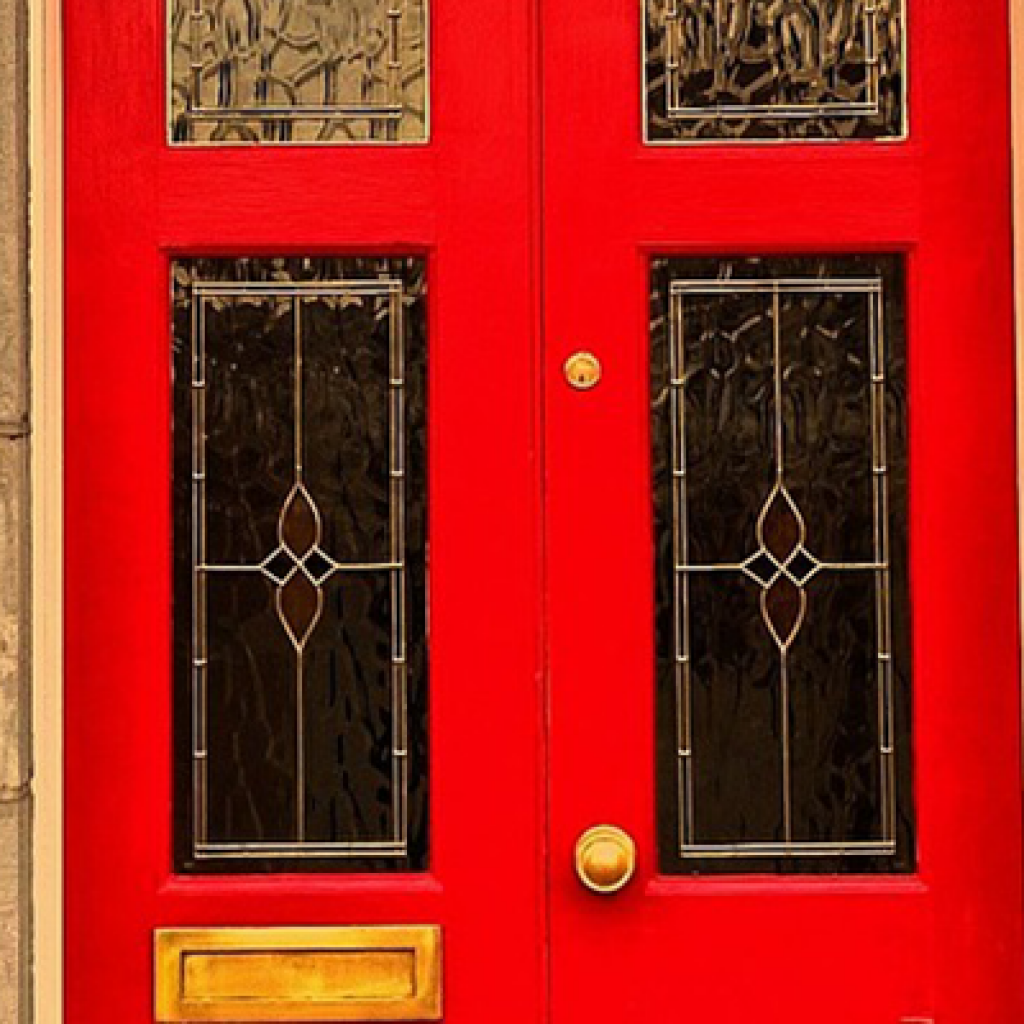Fleet Street is the second red property on the Monopoly Board. It is situated in the City of London.
During the 13th Century Fleet Street was known as Fleet Bridge Street. It was named after the River Fleet which was London’s largest underground river. Fleet Street was the road from the City of London to Westminster. It was flanked by ecclesiastical land and inns with the street itself becoming lined with shops, taverns and houses with private gardens behind. The lanes between these spaces became the courts and alleys which survive today.
Around 1500 publishing started in Fleet Street when Wynkyn de Worde set up a printing shop near Shoe Lane. Around the same time Richard Pynson set up a publisher and printing business next to St Dunstan’s Church. It wasn’t long before many more printers and publishers followed, establishing the long association between Fleet Street, printing and publishing. In 1702 London’s first daily newspaper the Daily Courant was published in Fleet Street, above the White Hart Inn. Fleet Street became the home of British national newspapers until the 1980’s.
The Great Fire of 1666 destroyed most of the buildings either side of eastern part of Fleet Street however the buildings were rebuilt using the same pattern of the courts and alleys.
The Church of St Bride was destroyed in the fire, previously there had been a church of some sorts on that site for over 1000 years. It took nine years to rebuild by architect Christopher Wren. It was again reduced to ruins in 1940 after an incendiary bomb from the Germans. This time it took 17 years to rebuild after an archaeologist uncovered the foundations of all six previous churches on the site.
1 Fleet Street was owned by Child & Co which were one of the oldest independent private banks in the UK. The Child & Co brand are now owned by The Royal Bank of Scotland and the branch is still occupying the building.
17 Fleet Street is one of the few houses in London which has survived pre the Great Fire. The site can be dated back to the 12th century, however in 1610 the property was built and became a tavern which was known as the Prince’s Arms. During the 17th century the house changed its name to the Fountain and during 1795-1816 the front part of the building housed Mrs Salmon’s Waxworks and the tavern continued in the back.
Ye Olde Cock Tavern originally dates from around 1550. It was rebuilt on the opposite side of the road in 1880 as a branch of the Bank of England was built where it stood and it was known then as the Cock and Bottle.
Hoare’s Bank moved to 37 Fleet Street in 1690 and still occupy the site today. In 1828 a new banking house was built providing accommodation for the partners and some of the clerks. In 1941 the premises were heavily bombed, resulting in fires which were extinguished by the household staff using water from the bank’s well. C Hoare and Co are the United Kingdom’s oldest, family owned bank.
66 Fleet Street is The Tipperary pub, which was built on the side of a monastery, dating back to 1300, where the monks brewed beer. It was rebuilt in 1605 and called the Boars Head, it survived the Great Fire of London because it was built of stone and brick, unlike the surrounding buildings which were constructed of wood. In 1700 SG Mooney & Son Brewery from Dublin, Ireland purchased the Boars Head and it became the first Irish pub outside of Ireland and the first pub outside of Ireland to have bottled Guinness and later draft. In 1918 after the Great War the printers who came back from fighting had the name changed to ‘The Tipperary’ from the song ‘It’s a long way’.
96 Fleet Street The Old Bell Tavern was built by Sir Christopher Wren in the 1670’s for builders who were working on rebuilding the Church of St Brides after the Great Fire. It was only accessible via an alley from Fleet Street and soon attracted printers and journalists from Fleet Streets newspaper industry.
98-100 Fleet Street The Punch Tavern changed its name from the Crown and Sugar Loaf as the entire staff from the Punch magazine (founded in 1841) met at the pub. There has been a pub at the site since the 17th Century but it was refitted in 1893-97. The interior survived the war and the original features remain today.
145 Fleet Street Ye Olde Cheshire Cheese was rebuilt shortly after the Great Fire of London, however a pub had occupied that site since 1538. Charles Dickins used to frequent the pub and it is alluded to in A Tale of Two Cities. The pub had an African Grey parrot called Polly. The parrot was there for around 40 years and became famous, when it died in 1926 around 200 newspapers across the world wrote an obituary. In 1962 a number of sexually explicit erotic plaster of paris tiles were recovered from an upper room and given to the Museum of London. The tiles suggest that the room was used as a brother in the mid-eighteenth century.
194 Fleet Street was built in 1888 and was the Law Courts branch of the Bank of England. It lies between the barber shop owned by Sweeney Todd, and the pie shop which was owned by his mistress Mrs Lovett. Under the present building are the tunnels and vaults where he butchered his victims before they were cooked and sold in the pies to Mrs Lovett’s unsuspecting customers. The Crown Jewels were stored in the vaults during the First World War.
Fleet Street’s other famous affiliation (as briefly mentioned previously) is Sweeney Todd ‘the demon barber’. His shop was at 186 Fleet Street and it was here that he is believed to have robbed and murdered over 150 customers, dragging them to his Mistress Mrs Margaret Lovett’s premises where she would turn them into meat pies, then sell them at her Meat Pie shop.
Fleet Street is now associated the with investment banking, legal and accountancy professions
Listed Buildings
Middle Temple Gatehouse
Temple Bar Memorial
Church of St Brides
Statue of John Hiccocks against rear wall of 30 to 32 Fleet Street
Telephone Kiosk, Red Lion Court, Fleet Street
Telephone Kiosk at Junction by Bell Yard, Fleet Street
1 Fleet Street
3 Fleet Street
10 Fleet Street
13 and 14 Fleet Street
15 and 16 Fleet Street
17 Fleet Street
18 and 19 Fleet Street
Ye Olde Cock Tavern 22 Fleet Street
21 Fleet Street
29 Fleet Street
30, 31, 32 Fleet Street
33 Fleet Street
Hoare’s Bank 37 Fleet Street
49 and 50 Fleet Street
Glasgow Herald Office 56 and 57 Fleet Street
Tipperary Public House 66 Fleet Street
9 Salisbury Court 82-85 Fleet Street
90-94 Fleet Street
The Old Bell Tavern 96 Fleet Street
The Punch Tavern and offices above 98-100 Fleet Street
The Daily Express Building, 120-129 Fleet Street
Mersey House 132-134 Fleet Street
The Daily Telegraph Building 135-141 Fleet Street
143 and 144 Fleet Street
Ye Olde Cheshire Cheese Public House 145 Fleet Street
146 Fleet Street
Phoenix Assurance Company, 187 Fleet Street
193 Fleet Street
194 Fleet Street
Future
Planned for 2018 is the £60 million Garden Bridge across the Thames received planning permission from Lambeth council recently. It will solely be a footbridge which will run from Temple Station on the north side of the Thames to the Southbank Centre.
Information
The average sold price of a Flat in November 2014 was £550,000.00
If purchasing a property in Fleet Street Conveyancing Data Services recommended searches are Groundsure Energy, Groundsure Underground Report a Groundsure HS2 report and a Groundsure Flood Report.
The average rent of a two bedroom flat in the City of London is £3773pcm
The nearest Underground is Blackfriars.
The nearest Overground is City Thameslink or London Blackfriars
Fleet Street is in the Congestion Charge Zone. You have to pay an £11.50 daily charge if you drive between 07.00 and 18.00, Monday to Friday.
The Thames Tideway Tunnel will run through the City of London under the River Thames. Near Fleet Street will be the new Blackfriars Bridge Foreshore which will commence construction in 2016.




















